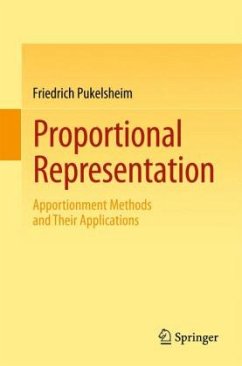The book offers a rigorous description of the procedures that proportional representation systems use to translate vote counts into seat numbers. Since the methodological analysis is guided by practical needs, plenty of empirical instances are provided and reviewed to motivate the development, and to illustrate the results. Concrete examples, like the 2009 elections to the European Parliament in each of the 27 Member States and the 2013 election to the German Bundestag, are analyzed in full detail. The level of mathematical exposition, as well as the relation to political sciences and constitutional jurisprudence makes this book suitable for special graduate courses and seminars.
"The monograph presents a contemporary approach to finding proportional representation for parliamentary democracy institutions needed for distribution of the seat numbers close as possible to a structure of the vote counts. ... The variety of mathematical settings and innovative techniques presented in the book can be useful to political scientists and graduate students in solving both theoretical and applied problems." (Stan Lipovetsky, Technometrics, Vol. 59 (3), July, 2017)
"This book contains a rich and complete analysis of both the mathematics of apportionment methods and the application of apportionment methods used in most parliamentary elections. ... The topic of this book is not only suitable for mathematicians, but also for politicians, historians and also for people interested in constitutional law and European law. ... The mathematical expositions are presented in a clear, concise and clever way." (Dharma Lesmono, Mathematical Reviews, January, 2015)
"This book contains a rich and complete analysis of both the mathematics of apportionment methods and the application of apportionment methods used in most parliamentary elections. ... The topic of this book is not only suitable for mathematicians, but also for politicians, historians and also for people interested in constitutional law and European law. ... The mathematical expositions are presented in a clear, concise and clever way." (Dharma Lesmono, Mathematical Reviews, January, 2015)

